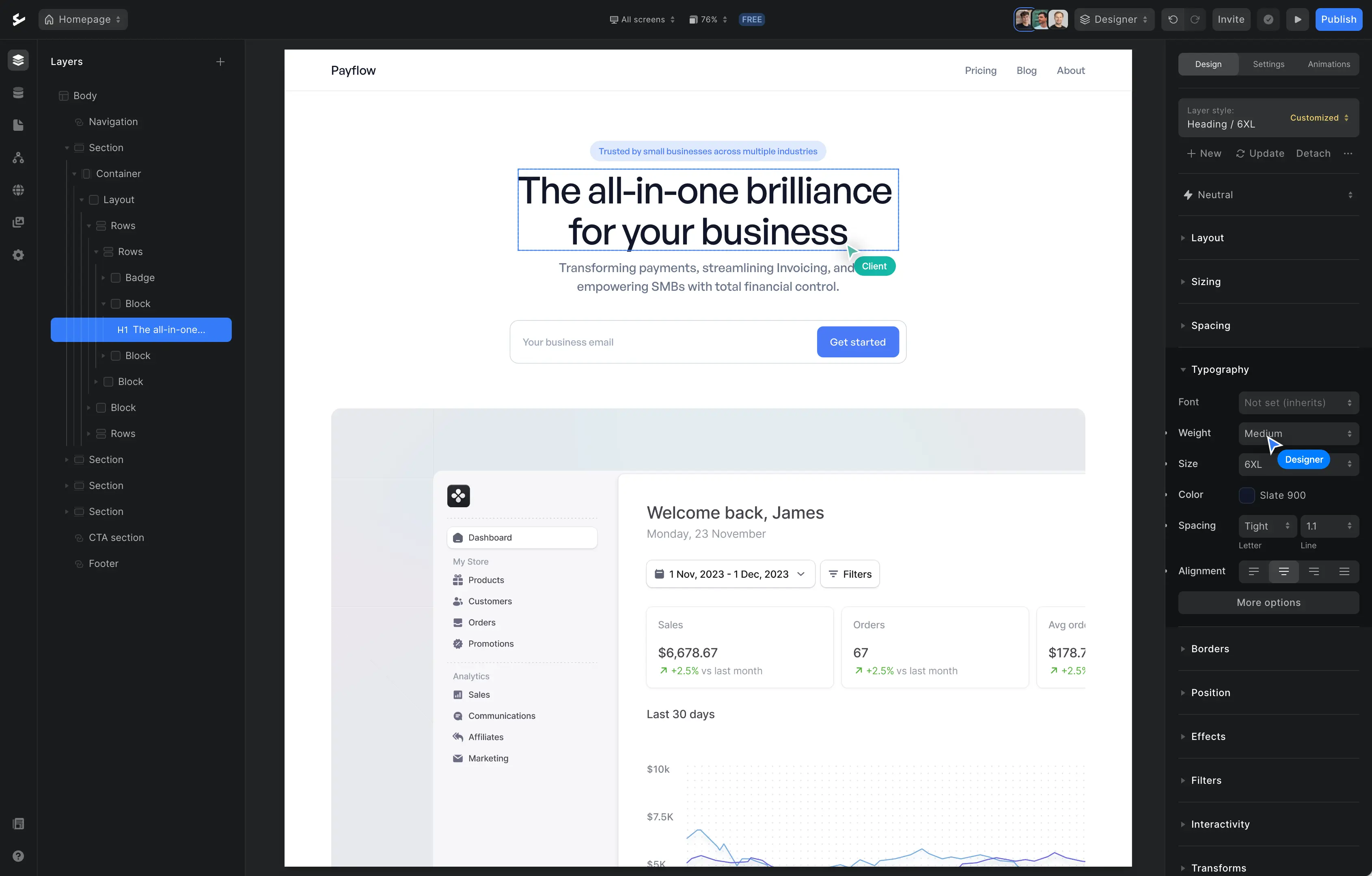
Today marks the first major milestone in this epic no-code journey.
Ladies and gentlemen, Ycode private Beta is officially open! ✂️ cuts the ribbon ✂️
Over a year ago, we started dreaming of a no-code builder that’s a breeze to work with and gives people nearly the same flexibility as writing coding from scratch. We laid the first bricks for Ycode in the summer of 2019.
Our small team has worked on it full-time ever since, And while it has been extremely challenging at times, it’s also been so much fun and rewarding! If I’m honest, we could have easily continued to build it for years to come. Visual coding is truly limitless.
However, a great product isn’t made through building, more building… and then some more.
Products improve through feedback from the people that use them. That’s where you come in! We can only improve Ycode when people like you use our no-code tool to build their next website, app or startup.
That’s why we’re opening our doors to a Ycode private Beta program today. The platform is still a work in progress but you can already see how Ycode looks, works and feels—and get an idea of what’s possible in the future.
We encourage you to build and experiment right now and save your production-ready websites and apps for when we launch Ycode in its full glory.
We prepared Ycode documentation to show you the ropes as you get started.
And if you can wait three more minutes before you start building, I want to tell you about the five features that we’re personally very proud of. These features will enhance your build and I think you’ll love them as much as I do. 👏
5 features that make Ycode the no-code builder you’ve been waiting for
Ycode Beta already comes with a ton of amazing features that you’d expect from a no-code builder, and we’ve also added some capabilities that make Ycode one of a kind.
Some say these extra features make our no-code tool different from the others. Some even say they make Ycode better. We don’t want to brag, so you can decide for yourself. 😉
1. User authentication
Do you want to build a web app where users can easily sign up, log in and see protected data?
With Ycode, this feature is built-in. No need to connect any third-party tools or services to authenticate users. This is great for people that are building online courses or member portals.
With one switch you can enable authentication. Create email automation workflows for things like password reminders and easily adjust the design and settings of your authentication pages.

2. Airtable integration
We know how much the no-code community loves Airtable. That’s why we decided to build a native Airtable integration that supports both reading and writing account access.
Now, of course, Ycode also comes with full-feature local databases in which you can store your data. The Airtable integration can be used instead of the Ycode database, or it can be combined with it. You decide!

3. External APIs
Ycode can do a lot, but it’s impossible to add every feature into one no-code tool. This is where external APIs come in and make all the difference.
With Ycode, you can connect to any API and use their data in your project. For example, want to show the weather in your location in real-time on your website? Quickly connect to a weather API of your choice and you’re good to go!
Or, maybe you’re looking to build a dashboard that includes statistics from different APIs.
The possibilities are endless.

4. Inline variables
With Ycode, it’s all in the details. Inline variables are a great example of that. It might seem like a small feature, but we put in a lot of work to make these variables work seamlessly for you.
Our initial idea was to only let you assign one variable per layer. If you wanted to greet new users with a headline saying “Hello Ignas!”, you would need to create three text layers.
That sounds like a lot of work, right? That’s why we decided to also work on an inline variable feature. Now you can pick whether you want to use fixed variables or inline variables. Read more about the difference between the two here.

5. SVG icons
If you’re a designer, you probably love icons (or at least, work with them quite a lot).
The best icon format is without a doubt SVG. With this format, you can easily change the size and color of the icons. But to make these changes, you need to import SVG as code.
And that’s exactly what Ycode supports.
So designers, just imagine icon colors that change when hovering over them or using the same icon on different backgrounds. Feels good, doesn’t it?

A big thank you goes out to... you!
To wrap things up, let me give you a virtual high-five and say thank you for being interested in Ycode. We hope that you’ll take our Beta product for a spin.
Together we can make visual web development accessible to everyone!
We appreciate all your feedback, suggestions and ideas. Please send them over via this link, post them in the product feedback channel in our community or chat with us on Twitter @joinycode.
Get your project started today
Discover our intuitive visual editor, use built-in CMS collections, SEO features and launch your web projects with ease.

